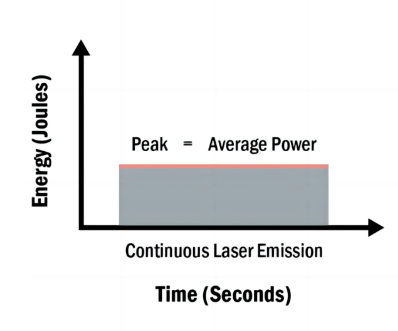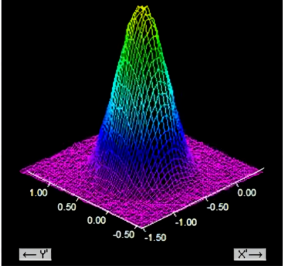Welcome:GZTECH
Welcome:GZTECH
Laser technology continues to evolve, and two popular modes of operation, Continuous Wave (CW) and Quasi-Continuous Wave (QCW), have gained significant attention. These modes offer distinct advantages, each tailored to specific applications. In this exploration, we delve into the differences between CW and QCW lasers, revealing their unique capabilities and applications.
CW, short for "continuous wave," describes lasers that emit a continuous stream of energy, resulting in a constant laser output. This mode signifies that the laser remains active until intentionally turned off. CW lasers often possess lower peak power and higher average power, forming the foundation for various applications.
Imagine a beam of light that never wavers, like the gentle hum of a steady engine. CW lasers operate similarly, providing a consistent beam of laser energy. This mode is commonly employed in applications like metal cutting and welding of materials like aluminum and copper, offering widespread usability. Adjusting parameters such as power waveform, focal length, core diameter, and speed fine-tunes the CW laser process.

In terms of QCW lasers, the term "quasi-continuous wave" signifies lasers that produce pulsed output in intervals. Compared to the smooth, uninterrupted output of CW lasers, QCW lasers emit energy in bursts, offering unique advantages.
QCW lasers exhibit distinctive characteristics. Their energy distribution is more focused, resulting in higher energy density and greater penetration capabilities. This property makes QCW lasers particularly well-suited for applications involving challenging materials like high-refractory alloys, heat-sensitive substrates, and micro-connections. The capability of QCW lasers to generate higher peak power and energy density translates to enhanced performance in applications where precision and efficiency are crucial.
In applications requiring enhanced precision, QCW lasers excel. The intermittent bursts of energy minimize the impact of metallurgical effects like spattering and splashing, leading to improved overall weld quality. Furthermore, the smaller heat-affected zone and reduced thermal input make QCW lasers ideal for thin materials and components sensitive to heat.

When comparing CW and QCW lasers, several factors come into play. CW lasers exhibit a smooth and consistent output, making them suitable for applications demanding a seamless finish. However, QCW lasers present their own set of advantages, particularly in scenarios requiring precision, minimal heat impact, and deeper penetration.
QCW lasers shine in areas such as:
QCW lasers minimize the impact of metal spatter, resulting in a more stable and controlled process. The pulsed nature of QCW lasers prevents the accumulation of excessive heat, reducing the risk of spattering and material damage.
The intermittent energy bursts of QCW lasers lead to a more uniform distribution of heat within the weld pool. This uniformity reduces the chances of defects such as porosity, cracks, and irregularities.
The shorter interaction time between QCW lasers and materials results in a smaller heat-affected zone. This property is particularly advantageous when working with thin or heat-sensitive materials.
QCW lasers deliver higher peak power and energy density, enabling better penetration and enhanced process efficiency. This advantage is especially valuable in applications requiring deep welds and challenging materials.
In the dynamic realm of laser technology, the choice between Continuous Wave (CW) and Quasi-Continuous Wave (QCW) lasers is crucial. While CW lasers offer reliability and steady performance for various welding tasks, QCW lasers, led by GZTECH, offer distinct advantages.
With QCW lasers as a highlight of GZTECH's offerings, they bring reduced heat impact, heightened stability, and precision to the forefront. As technology advances, the importance of these laser modes in modern manufacturing becomes more apparent.
GZTECH stands at the forefront of innovation, providing cutting-edge solutions that harness laser technology's full potential. We redefine possibilities and elevate projects. When choosing laser sources, trust GZTECH as your partner for precision and progress.

By continuing to use the site you agree to our privacy policy Terms and Conditions.